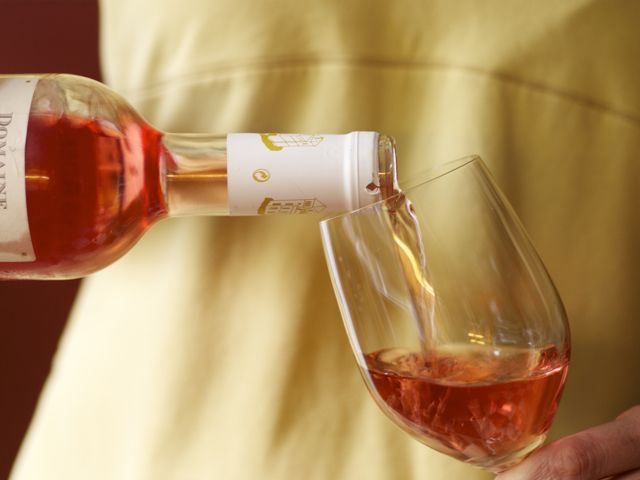
reference-image, l
(article, Anu Karwa)
p(blue). Editor's note: Anu Karwa wrote the Culinate wine column, titled Swirl, from July 2009 through December 2010. I love rosé, and I want to convince my “red wine only” S.O. to try it this summer. Can you help? I'm an advocate for drinking rosé year-round, but it's especially worth working on your skills of persuasion during the spring and summer. My first point of debate would be to emphasize how incredibly food-friendly this wine is. That alone is the reason I could be the spokesperson for adding rosé to your drinking repertoire, regardless of the season. Perhaps your other half hasn’t gotten over the unpleasant "this-must-be-sickly-sweet-because-it's-pink" memory of “blush” wine dispensed from a box or jug. But good rosé isn’t the commercially manufactured, pink-colored blend of red and white plonk. [%image pouring float=right width=400 caption="Rosé isn't just for summer."] Instead, have your significant other try rosé made in one of two ways: through the saignée, or bleeding, method, wherein some of the pink juice of a wine is run off early and then fermented, or through an abbreviated red-wine production method. For fun, try a blindfolded taste test. If you've got a good rosé, you may not be able to tell whether you’re drinking a full-bodied white or a light-bodied red. Generally, quality rosé has the light crispness of a white wine, and it can be as dry as a salt lick or off-dry. Its flavor kick is of a red, making it an easy palate pleaser. Ultimately, the best argument for drinking rosé is that it's simply and happily pleasant. It's the kind of wine that puts a smile on your face as you drink it. Or maybe it's not a cause-and-effect relationship between rosé and good spirits, but a correlation in that we tend to drink rosé in the merriest of circumstances: at picnics, barbecues, parties, and at sunny sidewalk cafés. [[block(sidebar). h1. Also on Culinate Wine purveyor Bruce Bauer wrote about rosés a while back. His tip? Serve them ice-cold. ]] Regardless of where you drink rosé, try one of my favorites below. Then stash a few bottles for autumn to share with your newly-on-the-bandwagon beau. Maison Bouachon La Rouviere Tavel, France, 2008: A classic rosé made up of 50 percent Grenache from France's southern Rhône Valley. It has an alluring gamey flavor that an anti-rosé drinker would be surprised by, but all of the fresh ripe fruit flavor you expect. Torbreck, Saignée Rosé, Barossa Valley, Australia, 2009: A pleasantly different style of rosé with a slightly creamy palate thanks to six months spent in oak. It doesn’t fall into the super-juicy and fruity category, but instead is almost savory. Montes, Cherub Rosé of Syrah, Colchagua Valley, Chile, 2009: A perfect picnic rosé that bursts with juicy berry and orange-peel flavors. Mulderbosch, Cabernet Sauvignon Rosé, South Africa, 2009: The taste of homemade strawberry preserves is unmistakable here and adds to the soft and lingering finish. Cline, Mourvèdre Rosé, Contra Costa County, California, 2009: Refreshing, with a depth uncommon in most rosés. Layers of spice complement dark plum flavors that yield a rosé that red-wine-only drinkers will eat up. (This post is partially excerpted from the SwirlSavvy wine column in The Chicago Sun-Times.)

reference-image, l

pouring, l